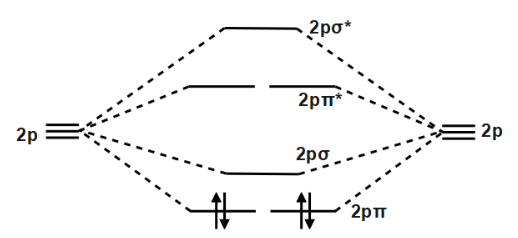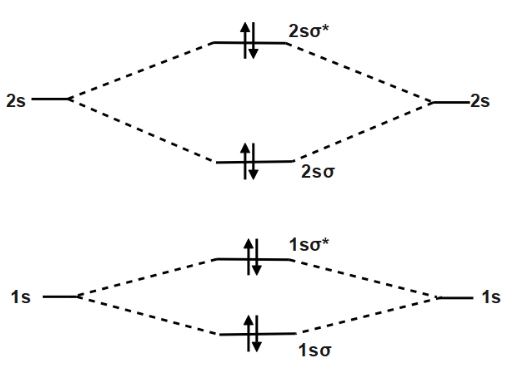
What is the molecular orbital diagram for
Answer
438.6k+ views
Hint :We know that
Complete Step By Step Answer:
The quantum state which has the lowest energy level is known as the ground state. The ground state is a singlet state. There are several excited singlet and triplet states that are relatively similar energy to the ground state. Molecular orbital theory shows that it has two sets of paired electrons in a degenerate bonding set of orbitals. This gives a bond order of two, which means that there should exist a double bond between the two carbons in a
As you know, a neutral carbon atom has a total of six electrons. This, of course, implies that a
Thus follows that the
It will be added to lowest energy unoccupied molecular orbital/lowest unoccupied molecular orbital, LUMO, that follows that the highest energy occupied molecular orbital/highest occupied molecular orbital, HOMO. The diagram below shows the two

Also, an unpaired electron will make the

Note :
The various quantum states of dicarbon form significant proportions of dicarbon under ambient conditions. The problem provides you with a MO diagram for the
Complete Step By Step Answer:
The quantum state which has the lowest energy level is known as the ground state. The ground state is a singlet state. There are several excited singlet and triplet states that are relatively similar energy to the ground state. Molecular orbital theory shows that it has two sets of paired electrons in a degenerate bonding set of orbitals. This gives a bond order of two, which means that there should exist a double bond between the two carbons in a
As you know, a neutral carbon atom has a total of six electrons. This, of course, implies that a
Thus follows that the
It will be added to lowest energy unoccupied molecular orbital/lowest unoccupied molecular orbital, LUMO, that follows that the highest energy occupied molecular orbital/highest occupied molecular orbital, HOMO. The diagram below shows the two

Also, an unpaired electron will make the

Note :
The various quantum states of dicarbon form significant proportions of dicarbon under ambient conditions. The problem provides you with a MO diagram for the
Latest Vedantu courses for you
Grade 11 Science PCM | CBSE | SCHOOL | English
CBSE (2025-26)
School Full course for CBSE students
₹41,848 per year
Recently Updated Pages
Master Class 9 General Knowledge: Engaging Questions & Answers for Success

Master Class 9 English: Engaging Questions & Answers for Success

Master Class 9 Science: Engaging Questions & Answers for Success

Master Class 9 Social Science: Engaging Questions & Answers for Success

Master Class 9 Maths: Engaging Questions & Answers for Success

Class 9 Question and Answer - Your Ultimate Solutions Guide

Trending doubts
State and prove Bernoullis theorem class 11 physics CBSE

What are Quantum numbers Explain the quantum number class 11 chemistry CBSE

Write the differences between monocot plants and dicot class 11 biology CBSE

Who built the Grand Trunk Road AChandragupta Maurya class 11 social science CBSE

1 ton equals to A 100 kg B 1000 kg C 10 kg D 10000 class 11 physics CBSE

State the laws of reflection of light




